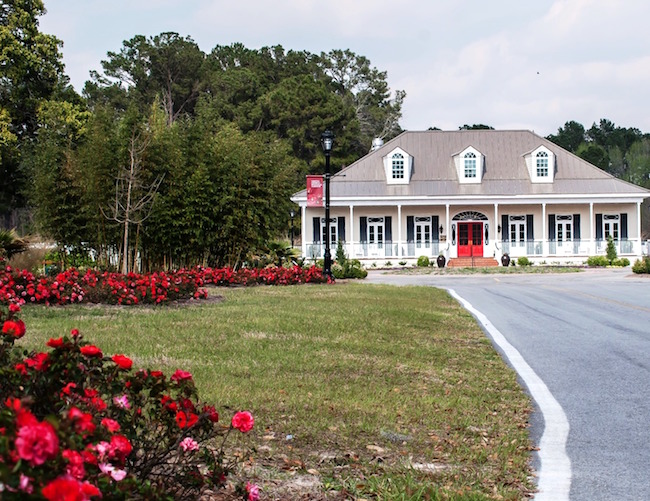As you drive down the entryway to the Andrews Visitor and Education Center, both sides of the drive are lined with large sweeps – or drifts, if you will – of hot-coral-colored roses. It seems every time I look at them, they are blooming, which can’t possibly be true.
The roses I am referring to are ‘Coral Drift’ roses. If you love Knock Out roses, I promise you will relish growing Drift roses. In fact, they come from Conard-Pyle/Star Roses and Plants, the same folks who brought us the Knock Out roses.
The Drift roses come in a variety of colors, ‘Red Drift,’ ‘Pink Drift’ (double pink), ‘Apricot Drift,’ ‘Coral Drift,’ ‘Peach Drift,’ ‘White Drift’ and ‘Popcorn Drift,’ which is a white-and-yellow blend. In addition to the entryway, we use Drift roses in the more formal Rose Garden, where they are combined with Knock Outs and a couple of floribundas, the yellow ‘Julia Child’ and the white-flowered ‘Iceberg.’
So here I am, touting Drift roses in the hot, humid South. Please know that they were also chosen as Louisiana Super Plants. In Louisiana State University trials, the Drift series was generating about five bloom cycles, according to LSU horticulturist Allen Owings. These bloom cycles started in April and concluded in October. Here in Savannah, Georgia, our entryway was in full bloom the first week of March, and now faces a little challenge of spending a couple of hours below freezing. Regardless, the Drift roses will rebound with warm weather.
You will love the low-growing, spreading habit of the Drift roses. They typically reach 2 to 3 feet tall with a spread of 3 to 4 feet. They produce flowers in dazzling clusters, and each blossom is about the diameter of a tennis ball, with some slightly smaller. You will treasure the fact that these are among the most disease-resistant roses for the landscape or mixed containers.
Roses need six to eight hours of direct sun each day. Morning sun is essential, but a little afternoon shade is tolerated. Good air movement helps the dew and rain dry quickly, further enhancing inherent disease resistance, so space them 4 to 5 feet apart. Before you plant your roses, get the beds prepared by incorporating 3 to 4 inches of organic matter and tilling to a depth of 8 to 10 inches. The ideal soil pH for roses is between 6.0 and 6.5. Planting on raised beds further maximizes good drainage. By all means, finish your bed or planting with a good layer of mulch.
Feed roses a slow-release or controlled-release fertilizer per formula recommendations. Apply it at the start of spring growth and again in midsummer. Prune Drift roses in late winter to early spring, just before new growth resumes. Typically the roses will triple in size after pruning, so plan on cutting back by two-thirds.
In the landscape, your options seem to be endless. We are clustering them around palms, in front of evergreen shrubs like viburnums and in combination with grasses like bamboo muhly. Be bold – plant enough to make a landscape impact by using them with your favorite perennials and a few splashes of annuals. The Drift roses put a whole lot of fun into your spring gardening.
Follow me on Twitter @CGBGgardenguru. Learn more about the University of Georgia’s Coastal Georgia Botanical Gardens at the Historic Bamboo Farm at www.coastalgeorgiabg.org/.








